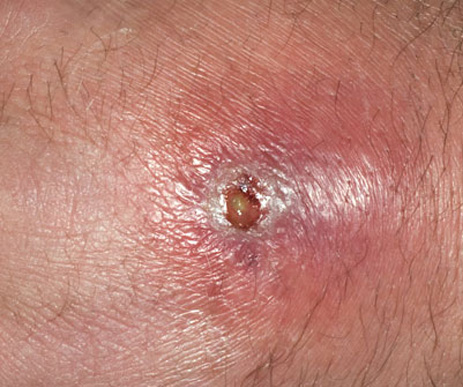
An abscess is a tender mass generally surrounded by a colored area from pink to deep red. Abscesses are often easy to feel by touching. The middle of an abscess is full of pus and debris.
Painful and warm to touch, abscesses can show up any place on your body. The most common sites are in your armpits (axillae), areas around your anus and vagina (Bartholin gland abscess), the base of your spine (pilonidal abscess), around a tooth (dental abscess), and in your groin. Inflammation around a hair follicle can also lead to the formation of an abscess, which is called a boil (furuncle).
Unlike other infections, antibiotics alone will not usually cure an abscess. In general an abscess must open and drain in order for it to improve. Sometimes draining occurs on its own, but generally it must be opened by a doctor in a procedure called incision and drainage (I&D;).
Abscesses are caused by obstruction of oil (sebaceous) glands or sweat glands, inflammation of hair follicles, or minor breaks and punctures of the skin. Germs get under the skin or into these glands, which causes an inflammatory response as your body's defenses try to kill these germs.
The middle of the abscess liquefies and contains dead cells, bacteria, and other debris. This area begins to grow, creating tension under the skin and further inflammation of the surrounding tissues. Pressure and inflammation cause the pain.
People with weakened immune systems get certain abscesses more often. Those with any of the following are all at risk for having more severe abscesses. This is because the body has a decreased ability to ward off infections.
Most often, an abscess becomes a painful, compressible mass that is red, warm to touch, and tender.